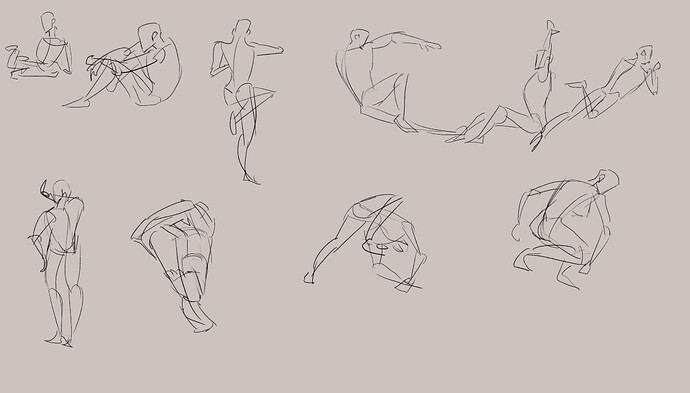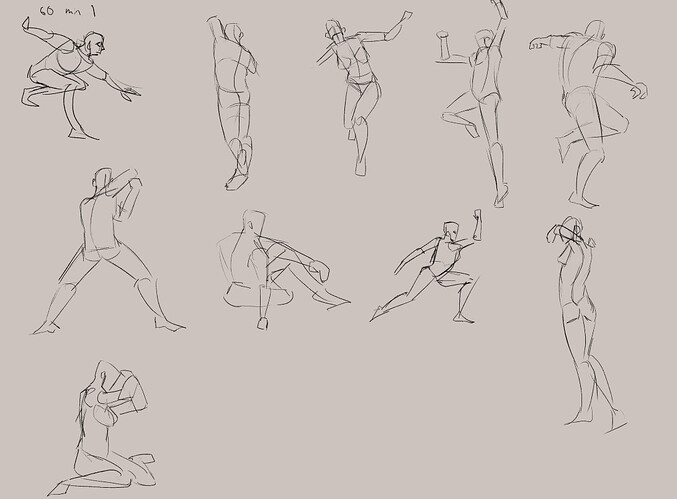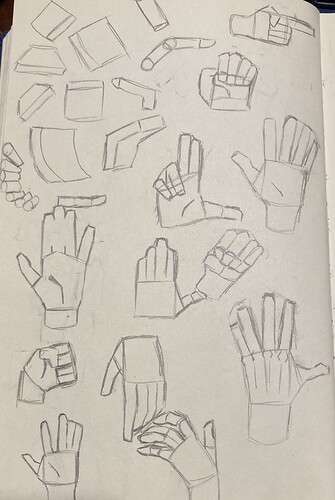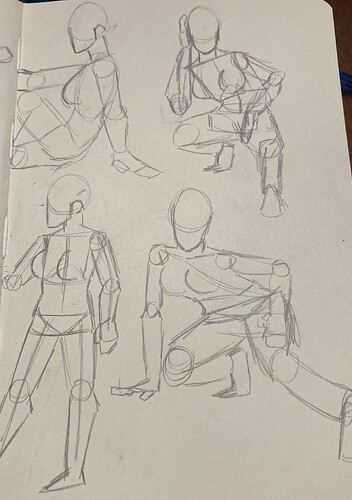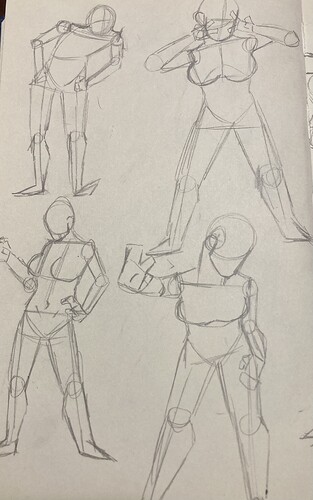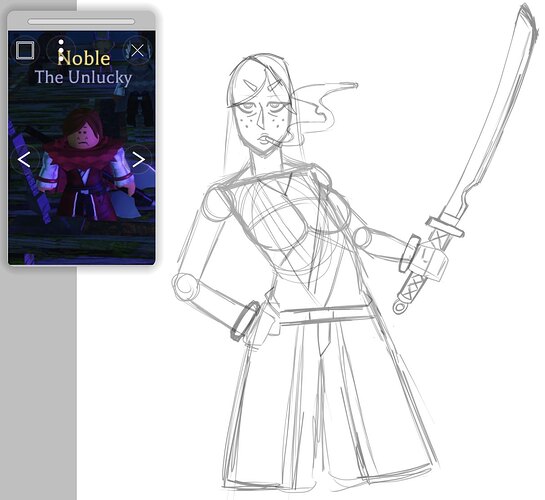Have a try at doing gesture drawings, I usually do 10 thirty second pieces and 10 one minute pieces every day, and if I’m feeling like it 5 two minute drawings.
here are some examples of what I do:
30 seconds:
60 seconds:
I also wrote some notes on gesture drawing from what I’ve learned (below)
Overview
When gesture drawing your main goal is to get the feeling of a pose.
When looking at a figure pay close attention to the hips, torso, and head. Overtime this will improve your observational skills as well as your speed and efficiency when drawing.
To begin, draw a line through from the head down to the foot holding the majority of the weight of the figure (just guess it’ll get easier later).
Then form a stick figure, circle of the head, line for the collarbone, line for the spine, connect to hips, then add arms and legs.
Once you begin measuring, erasing, or otherwise improving the drawing, you have ceased to gesture-draw and begun rendering. So keep this in mind.
Landmarks
Being able to locate what are the important landmarks of the figures are is very useful for quickly capturing their gesture. Previously, paying attention to the hips torso and head have been mentioned but these can be looked at deeper.
Look for bony points, things that stay consistent between a lot of people. Such as:
Hips
- the front of the pelvis
Torso
- the sternum
- How long is the ribcage
- Collar bones
Head
- The brow line, and how it relates to the top of the ear
- How is the cranium tilted?
Helpful videos
- Gesture drawings help prevent drawings from feeling stiff.
- When given enough time, try and add the expression of the figure you are drawing as well.
- Since you are going for the feel of the pose, feel free to change it up to make it more clear, or exaggerate further.
- Level 1: Idle/Balanced Poses, keep character void of detail for as long as possible until you are happy with the pose, loose lines.
- Offsets: Break symmetry, such as tilting shoulders and hips in opposite directions can make the pose more dynamic.
- Center of Mass: Imaginary line that splits the character where the weight is on both sides, only matters when character is on the ground.
- Face away from camera.
- Level 2: Action poses, poses that happen during an action
- Flow: break down pose into curves, rising from the ground.
- Silhouette: Not all dynamic poses look good, sometimes it can be modified a bit to improve how it looks.
- Level 3: 3 Dimensionality
- [[Perspective]]
- Foreshortening
- Level 4: High field of view, stretches perspective which adds dynamism
- Level 5: Framing
- Level 6: Secondary motion, anything that moves due to motion or an exterior force. Such as hair
